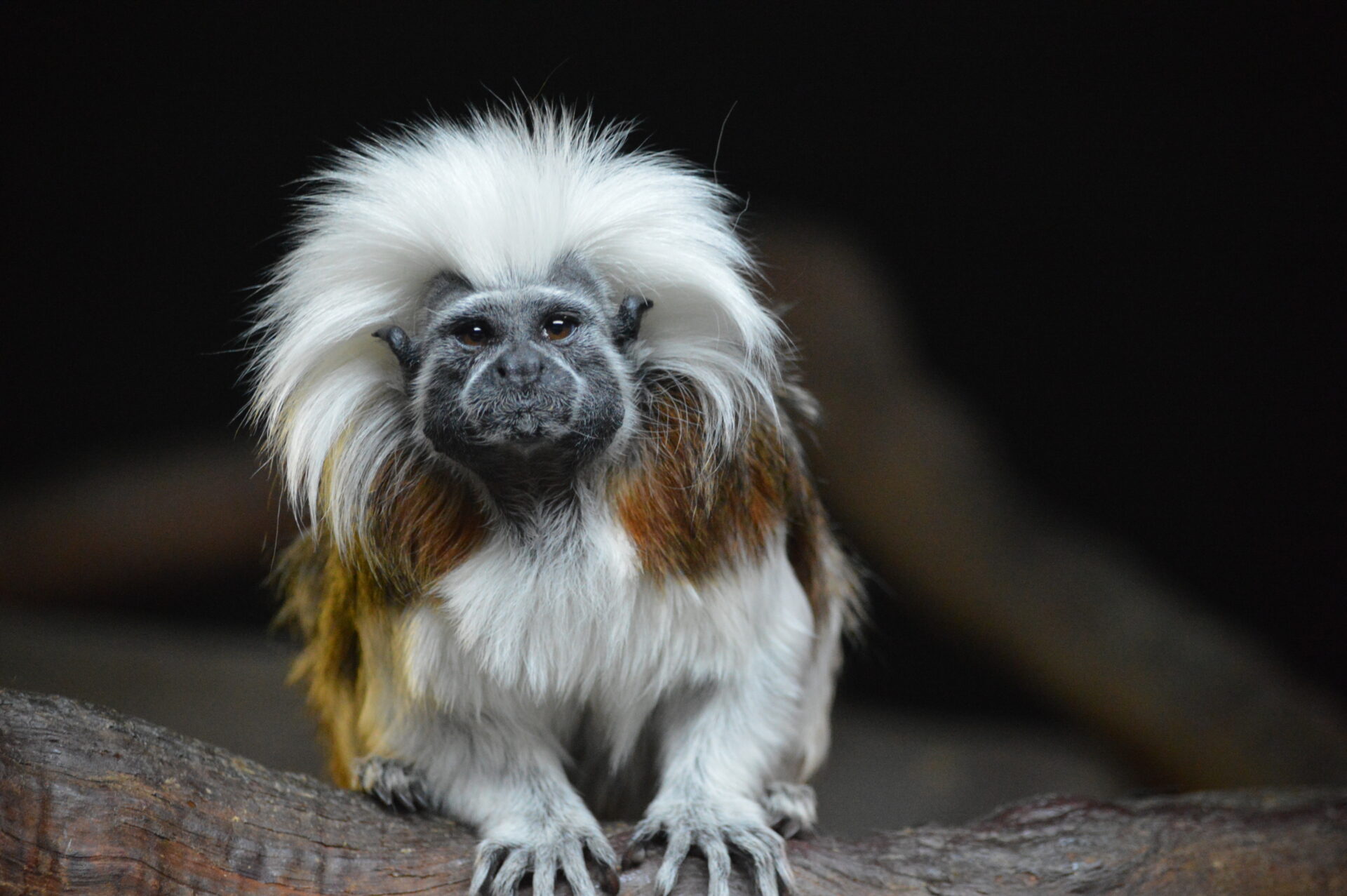Cotton-Top Tamarins

Basic Information:
Scientific Name: Saguinus oedipus
Habitat: Cotton-top tamarins are exclusively found in the forests of Northeastern Colombia (primarily in parks and reserves such as Paramillo National Park).
Diet: Cotton-top tamarins are omnivores and have been known to eat fruit, flowers, nectar, and small pray such as frogs, snails, lizards, spiders, and insects.
Size: 0.7 to 0.8 feet tall / 1.6 to 1.8 feet long
Weight: Around 0.9 pounds
Lifespan: 12.2 years according to Species Survival Statistics
Distribution Map:
I.U.C.N. Conservation Status:

What does this mean?
Critically Endangered – a species determined by the International Union for Conservation of Nature (I.U.C.N.) to possess an extremely high risk of extinction as a result of rapid population declines of 80 to more than 90 percent over the previous 10 years (or three generations), a current population size of fewer than 50 individuals, or other factors (such as severely fragmented populations, long generation times, or isolated habitats).
Our Cotton-Top Tamarin:
Dharma (Female) – Born December 28, 2004
About Cotton-Top Tamarins:
Cotton-top tamarins are recognizable by their white mane on the top of their head which comes just above their eyes. Tamarins are omnivores, they eat insects, fruits, sap, blossoms, leaves, nectar, bird’s eggs and small vertebrates. They are restricted to a small area in Colombia in rainforests and open woodlands. Tamarins usually live in groups of 3 to 9. There is a dominant pair in groups who are the only ones to produce young. One tamarin will be on duty as a “guard” to look out for predators. They are threatened due to habitat damage and being collected for use in medical studies. They are still illegally poached as pets.
Did You Know?!
- Cotton-top tamarins are very noisy! They have up to 38 distinct sounds which express joy, curiosity, fear, warnings, playfulness, and other behavioral sounds.
- When alarmed or excited, a cotton-top tamarin’s hair will stand up to make them look bigger and more impressive.
- Due to their fruit filled diet, cotton-top tamarins are important seed dispersers in their ecosystems. Due to their “CRITICALLY ENDANGERED” conservation status, the declining population of cotton-top tamarins negatively impacts the Columbian forests that they call home.
